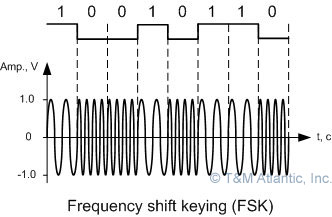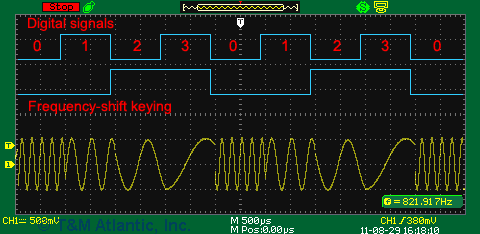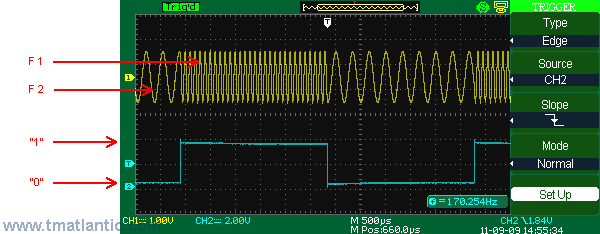| www.tmatlantic.com
Test & Soldering Equipment On-line Store |
|
D.E.V.I.C.E. (Wiki)Calculators Services |
|||||
Filter by first letter
|
FSK - frequency shift keyingFrequency shift keying is a signal transform method when the carrying oscillation frequency changes abruptly depending on the discrete data messages. At frequency shift keying each digital symbol has its own carrier signal frequency matching it. Manipulated signal amplitude and phase stay the same. The picture below shows the graphical chart of zeros and unities binary order as well as the relevant frequency shift keyed signal chart. The frequency of 1 KHz matches the binary signal low level, to code the high level – sinusoidal carrier signal frequency of 0.5 KHz.
The next animated picture shows the example of the frequency shift keying of sinusoidal carrier signal, two-digit code is an information signal. The frequency of 1 KHz matches digital code “0”, 2 KHz – “1”, 3 KHz – “2”, 4 KHz – “3”.
The following picture demonstrates two-point frequency shift keying where carrier signal frequency (yellow ray) takes on two different values depending on the rectangular signal level (blue ray) controlling the shift keying.
|
Site mapPrivacy policyTerms of Use & Store PoliciesHow to BuyShippingPayment




|




























